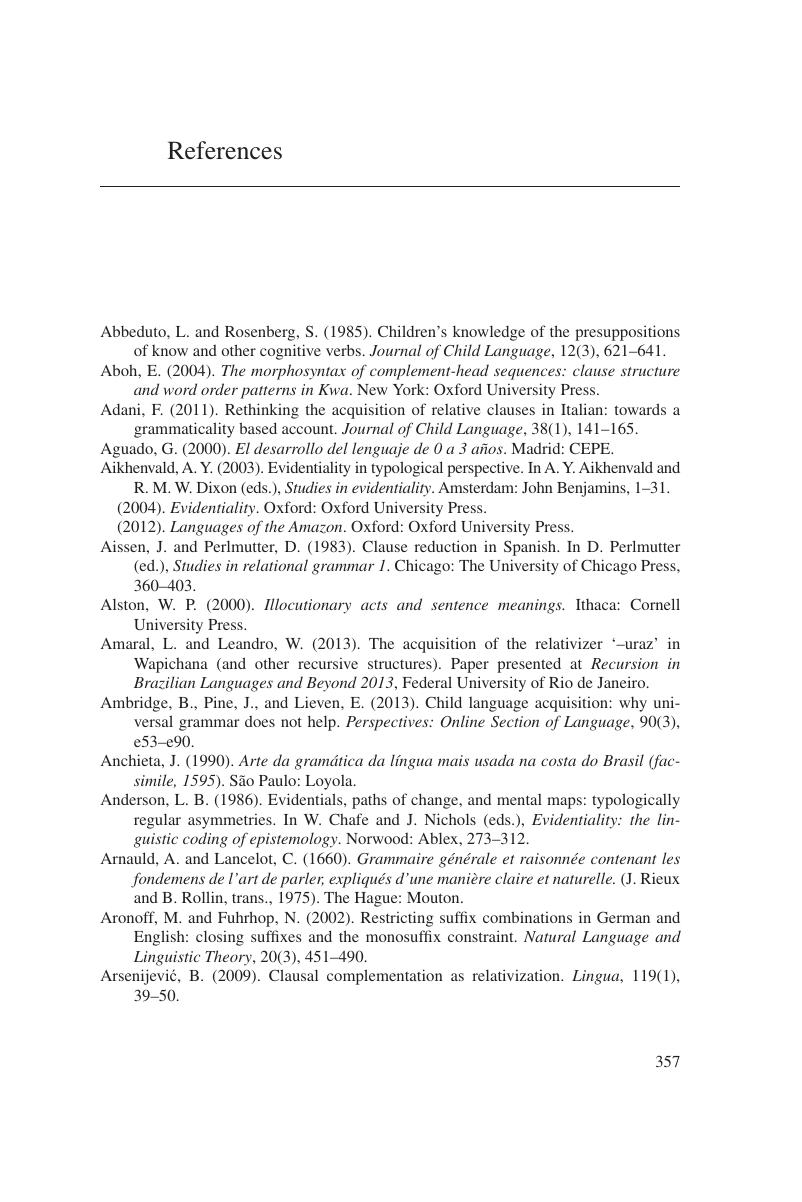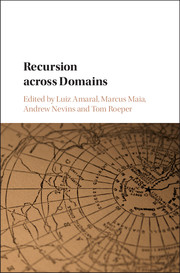Book contents
- Recursion across Domains
- Recursion across Domains
- Copyright page
- Contents
- Figures
- Tables
- Contributors
- Foreword
- Acknowledgments
- Interlinear Gloss Abbreviations
- Introduction: A Map of the Theoretical and Empirical Issues
- Part I Speech Reports, Theory of Mind, and Evidentials
- Part II Recursion along the Clausal Spine
- Part III Recursive Possession and Relative Clauses
- Part IV Recursion in the PP Domain
- References
- Index
- References
References
Published online by Cambridge University Press: 05 June 2018
- Recursion across Domains
- Recursion across Domains
- Copyright page
- Contents
- Figures
- Tables
- Contributors
- Foreword
- Acknowledgments
- Interlinear Gloss Abbreviations
- Introduction: A Map of the Theoretical and Empirical Issues
- Part I Speech Reports, Theory of Mind, and Evidentials
- Part II Recursion along the Clausal Spine
- Part III Recursive Possession and Relative Clauses
- Part IV Recursion in the PP Domain
- References
- Index
- References
Summary

- Type
- Chapter
- Information
- Recursion across Domains , pp. 357 - 378Publisher: Cambridge University PressPrint publication year: 2018

